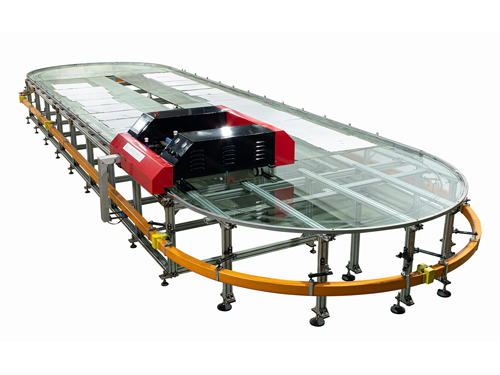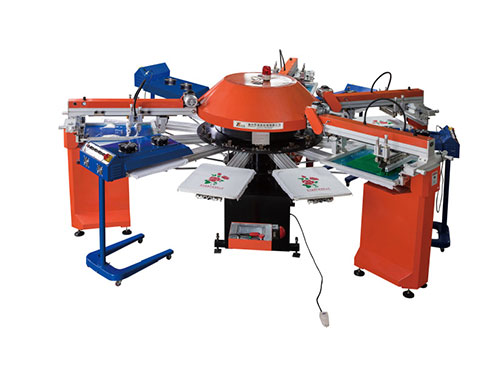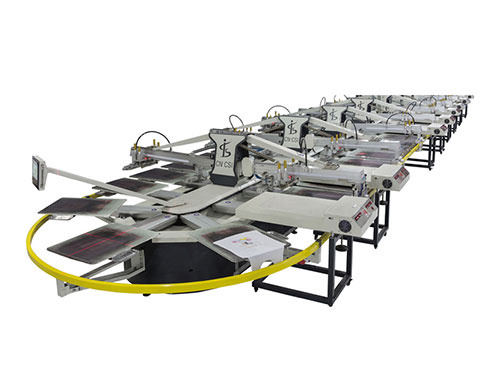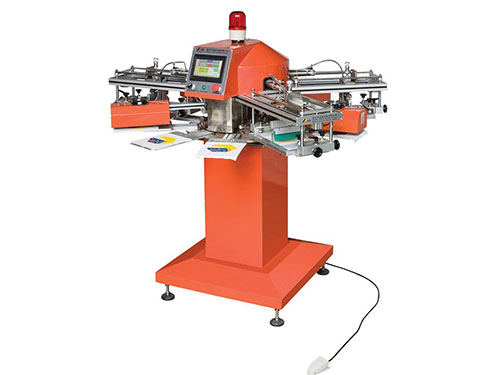Quick Start in Two Minutes [Flatbed Screen Printer]
A screen printing machine is a machine for printing text and images. It is a general term for machines or equipment that produce printed matter. It can be divided into flatbed screen printer, curved screen printing machines, and rotary screen printing machines. In this article, Changs machinery will tell you about the structure, printing principles and process flow, operating specifications, adjustment methods for problems, etc.

Structural composition of flatbed screen printer
The flat-screen printing machine is composed of a transmission device, a printing plate device, a printing device, a supporting device (that is, a printing platform), a plate alignment mechanism, a drying device, and an electrical control device.
Printing principle and process flow of flatbed screen printer
When working, the power is transmitted through the transmission mechanism, so that the squeegee squeezes the ink and the screen printing plate in motion, so that the screen printing plate and the substrate form a nip line. Since the screen has tension N1 and N2, scraping ink plate produces a force F2, and the resilience makes the screen printing plate, not in contact with the substrate except the nip line. Under the action of the extrusion force F1 of the squeegee, the ink passes through the mesh and moves from the moving nip line Missed onto the substrate.
During the printing process, the screen printing plate and the squeegee move relative to each other, and the extrusion force F1 and the rebound force F2 also move synchronously. Blots are smudged. That is, the screen is constantly deformed and rebounded during the printing process.
After unidirectional printing, the squeegee is separated from the substrate together with the screen printing plate, and at the same time, it returns to the ink, that is, completes a printing cycle.
Operation specification of flatbed screen printer
The flat screen printing machine uses a flat-screen screen plate for printing. In addition to selecting screens of different textures according to different printing requirements, there are some basic requirements for the screen itself. The requirements of the flat screen printing machine for the screen are mainly :
1. The screen should have qualified strength to meet the tension requirements during stretching and printing.
2. The wear resistance should be high, and the screen should have qualified wear resistance to ensure that the screen printing plate has a high printing resistance (the screen with high wear resistance can be recycled and reused). 3. Since the screen is exposed to water during the printing and plate-making process, it is required that the shrinkage and elongation of the screen should be small after being exposed to water.
4. The surface of the screen wire should be relatively smooth to reduce the phenomenon of blocking the mesh during the printing process.
5. The mesh size of the screen should be uniform to ensure a uniform amount of ink leakage.
6. Strong solvent resistance, the physical properties of the screen should remain unchanged after being exposed to solvents.
Problem adjustment of flatbed screen printer
1. Adjustment of guide rail and printing plate
1. The platform is parallel to the guide rail, and the scraper moves along the guide rail. If the two are not parallel, the scraper may not touch the platform with a certain pressure, or even have a gap. This adjustment has been adjusted before the original factory has passed.
2. The screen plate should be parallel to the platform, otherwise the screen distance will be inconsistent, which will cause the squeegee printing pressure and screen plate deformation to be inconsistent, so the flatness of the sound card frame itself should be ensured.
3. Adjust the printing accuracy between the screen printing plate and the printed piece on the screen printing machine. Height adjustment (>40mm ), front and rear adjustment and left and right adjustment (>20mm ), horizontal angle adjustment (>3°).
4. The screen (table) distance adjustment can be realized by lowering the screen printing plate or raising the platform, and the method of raising the platform is generally adopted. The distance between the four corners of the screen printing plate should be consistent, and the error should be ≤0.5mm. The distance between the nets is generally 2~5mm, and the distance between the nets is allowed to be larger at the front and smaller at the rear only when there is a compensation action for lifting the net.
2. Scraper adjustment
1. The adjustment of the brush pressure should be carried out at the same time as the adjustment of the printing plate and the printing countertop. In metal screen printing, the adjustment of the printing working pressure is the adjustment of the scraper position.
2. The flatness of the printing ink plate and the platform can be adjusted by adjusting the upper and lower height ratios of the extruder screw respectively. The upper and lower top lines can be adjusted by the intermediate shaft and the top line. parts.
3. The adjustment of the inclination angle of the board is generally within the range of 65<85 degrees, which can be selected according to the needs.
4. The length of the board cannot be adjusted. According to the packaging and delivery, there are several different lengths for each piece to choose from.
3. Adjust scraping speed and stroke
Generally, the adjustment rocker through the infinite gear transmission maintains the adjustment of the entire working cycle to ensure that the speed of each stage is the same, and each push rod adjustment is equipped with a relative
The clamping mechanism, and the operation of scraper printing must be carried out in a locked state. The installation and maintenance of the screen printing machine generally have specific requirements and regulations in the equipment instructions, and users can refer to them.
Including the adjustment of stroke size and stroke position. The screen printing machine with guide rod structure and swing rod structure can adjust the stroke and improve the
Lifting feet and lifting four strokes. The pneumatic organization of the metal screen printing machine can adjust the stroke according to the position of the switch to adjust the stroke. The stroke of the screen printing machine driven by the transmission chain cannot be adjusted. It should be noted that if you want to be fast, all movements are fast, and if you want to be slow, all movements are slow.
Video Tutorial for flatbed screen printer
Expand knowledge:
Matters needing attention before printing
1. Keep the printing glass of the printing machine clean, clean the glass with a clean soft cloth and glass cleaner, and remove the dirty spots on the glass of the printing machine, otherwise it will affect the quality of the printing.
2. Keep the printing film clean and minimize the dirty spots on the printing film, otherwise, it will affect the printing quality.
3. Exposure time If the same light source is used for a long time, the light will age, so it is necessary to update the light source in time.
Note: Choose the correct exposure time, do not overexpose to prevent loss of small dots, and at the same time prevent underexposure to prevent the layout from being dirty.
Factors Affecting Printing Quality
1. The printing machine and film should be clean;
2. The dot density should be high;
3. The dots should be clean and smooth, without blurring;
4. The photosensitive coating should be uniform and the thickness should be moderate;
5. The light source should be correct and reasonable;
6. Insufficient exposure will cause incomplete printing images, irregular image edges, pinholes in the film, and photosensitive adhesive flowing along the glued surface of the screen, which will affect the service life of the screen on the printing machine.
 English
English 中文
中文



